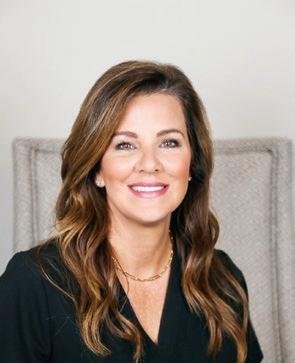
2 minute read
News Anchor Breaks Addiction Cycle for Good Journalist Wants Others to Know There is Hope for Recovery

stomach, not being able to control your bowels. When they talk about being ‘dope sick,’ it’s terrible. It’s the most excruciating, nasty feeling in the world. And it lasts for weeks.”
Advertisement
Cerullo said his biggest obstacle to stopping was the impending withdrawals. “I was continuing to go down a very bad road,” he said. “It came to a breaking point. I finally told my doctor, ‘I think I’m addicted.’ My doctor cut me off.”
Without any resources or offers of help from his doctor, Cerullo knew he wouldn’t be able to kick his addiction alone. His online research pointed him in the direction of Dr. Greg Lakin at Center for Change in Wichita. His treatment at Center for Change included a prescription of Suboxone, a drug that blocks the effects of opioids, curbs cravings and stops the painful withdrawal symptoms. When used in combination with therapy and education, opioid addicts have great success in breaking the addiction cycle for good.
Jared Cerullo of Wichita has a message for anyone with an addiction to doctor-prescribed pain pills. “There is help available. You don’t have to suffer,” said the longtime journalist, news anchor and former Wichita City Council member. He knows all too well how difficult it is to be bound to medication, yet not know how or where to get help.
“Ten years ago I found myself between a rock and a hard place,” he said. “The stigma of being addicted is still bad today, but a decade ago it was even worse. I was afraid to tell my own doctor.”
Cerullo may be familiar to many Wichitans as a longtime TV and radio news anchor in Wichita. Today he provides news, weather and traffic for about 30 different radio stations nationwide from his home studio in south Wichita.
A bowling injury was what first sent Cerullo to the doctor in search of shoulder pain relief. “The doctor always told me I wasn’t bad enough to do surgery, so he started me on pain pills,” he said. “I wanted to continue bowling but I couldn’t bowl if I hurt, so the pills really helped.” Cerullo was soon taking pain pills daily. With time, his dependence on them increased — as did the number of pills he was taking each day. His doctor continued to prescribe the pain pills month after month, and Cerullo continued taking them.
“I was long past the point of being able to stop,” he said. “I had tried several times, but when you are down the path of having taken Percocet and Hydrocodone for six or seven years, there is no weaning off. Cold turkey is not possible.”
When he switched jobs to a manual labor position, he continued to increase his dosage to deal with the shoulder pain. “When you’re that deep into taking pills — 10, 12, 15 Percocets a day — if you stop taking them, the withdrawal symptoms are so severe: cold sweats, hot sweats, upset
“At that point in time Suboxone had just come on the market, and there were still a lot of questions about it,” he said. “But once I got on Suboxone I didn’t have to worry about withdrawal effects — and that was my biggest fear about getting off pain pills.”
Cerullo says Dr. Lakin and Center for Change saved his life. No more pills. No more withdrawal effects. “Instead of worrying about how many pills I was taking or if I was going to run out, I would think, what am I going to do today to be productive? That was a nice feeling.”
Today, he tells his story because he wants others to know there is hope. And he wants to remove the stigma around pain pill addictions. “When you think about being an addict, you might think of junkies and people shooting up heroin,” he said. “But a larger portion of this problem is everyday people: your friends, neighbors, family. It’s professionals, lawyers, attorneys, police officers. They are suffering because of these pills. I would highly recommend Dr. Lakin’s program to anyone who is struggling with this.”
















